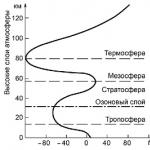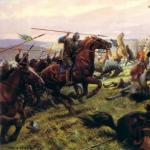Physical education lesson outline.
Date: Class:
Lesson topic: Medicine ball throwing.
The purpose of the lesson: Improvement of mastered motional actions when performing medicine ball throwing technique
Lesson Objectives:
Educational tasks:
Improve drill drills.
To consolidate the concepts of motor actions.
Strengthen the health of students through the development of physical qualities, coordination and strength abilities.
Developmental tasks:
To form the ability to adequately assess their own behavior and the behavior of others.
To develop the ability to highlight and formulate what is learned and what needs to be learned, to determine the quality and level of assimilation of knowledge
Formation of the ability to control, evaluate educational activities in accordance with the task and the conditions for its implementation
Develop medicine ball throwing skills at a high quality level
Educational tasks:
Form motivation for learning activities.
To form the skills of cooperation in different situations, the ability not to create conflicts and find ways out of controversial situations.
Lesson type:
Lesson in generalization and systematization of knowledge
Equipment used:
Medicine balls, whistle
During the classes:
| Dosage | Organizational and methodological guidelines | Universal learning activities |
||
| Construction. Submission of the report. Greetings. Message of the topic, tasks of the lesson. | Pay attention to fitness, discipline, wishes of good luck in the lesson | Planned personal results: 1. Self-determination. Independence and personal responsibility for their actions, attitude towards a healthy lifestyle. 2. Meaning formation. Motivation for educational activities (educational and cognitive) 3. Moral and ethical orientation. Skills of cooperation in different situations, the ability not to create conflicts and find ways out of controversial situations. Planned metasubject results: 1. Regulatory UUD. Make the necessary adjustments to the action after its completion, based on its assessment and taking into account the mistakes made. Ability to perform motor actions correctly technically. |
||
| Drill training: turns "Left", "Right", "Around" | Pay attention to correct execution |
|||
| Column walking one at a time: On toes, hands up On your heels, hands on your belt | Pay attention to the position of the head, shoulders, back |
|||
| An outdoor game "Sticks with ribbons" | Compliance with the rules of the game |
|||
| Rebuilding in 2 columns while walking | Follow the marching step, the technique of rebuilding |
|||
| ORU complex No. 2 1. I.p. - stand, stick at the bottom. 1-2 - raise your hands up, stand on your toes, inhale. 2 .I.p. - stand, stick at the bottom. 1- step with the right foot to the right, arms up 2- forward tilt. 3- straighten up 4 - return to and. p. The same to the left. 3. I.p. - stand feet apart, stick behind the back below. 4. I. p. - gray, stick forward 1 - bend the right leg, stick up 3 - bend the left leg, stick up 5. I. p. - lying on your stomach, stick at the top 1-2 - bend, arms up, legs up 6. I.p. - stand, stick at the bottom. 1 - tilt down 2 - squat, arms forward 3 - tilt down 7. I.p. - stand, stick at the chest 1 - jump legs apart, stick up 3 - jump legs apart, stick down | The heels of the feet are raised. Monitor your breath Do not bend your legs when performing a tilt. Follow the precise movement of your hands Monitor the correctness of the exercise When performing a slope, the legs are straight, the squat is full. Follow the coordinated movement of the arms and legs |
|||
| II. Main part 23 minutes |
||||
| 3.Communicative ECD Adequately assess your own behavior and the behavior of others. Formation of the ability to understand the reasons for the success and failure of educational activities and the ability to act constructively even in situations of failure |
||||
| Medicine ball forward from behind the head at a distance. A reminder of the medicine ball throw technique from behind the head. The exercise is performed in 2 groups in turn. | The teacher's demonstration of the execution technique. The children write down the result in their sports diary. Follow the safety regulations. |
|||
| Outdoor game Shootout | Rules of the game |
|||
| III. Final part 6 minutes |
||||
| Summing up the lesson. | Check all students. | |||
The Wall Ball is an exercise borrowed from boxing and is now actively used in CrossFit.
What muscles are involved in the work and what does this exercise give?
In the process of throwing a medicine ball at the target, the most important muscle groups for percussion martial arts work - the muscles of the legs, front deltas, pectoral muscles, triceps, intercostal muscles, oblique and rectus abdominal muscles.

Regular execution of the described exercise allows you to coordinate the work of the muscles involved in the exercise so that your direct punch with your hand acquires maximum accuracy, sharpness and strength. Plus, due to the fact that several muscle groups are involved in the movement at once, in a rather dynamic style, you burn a large number of calories per unit of time. If your task is to lose weight, this exercise is for you, with a surplus calorie balance, you can build up the mass of the muscles of the arms and chest, acquiring sufficiently functional muscles.
Exercise technique
We stand opposite a sufficiently strong wall or a specially equipped complex with a target. Legs are shoulder-width apart, knees slightly turned to the sides, toes point in the same direction as knees. Hold the medicine ball in front of the chest so that the shoulders are pressed against the body, the ball touches the chest in the solar plexus region. Next, we perform squats - we sit down as low as possible, bend our knees at an angle of more than 90 degrees, while trying to sit down in a controlled manner, keeping the tension in the muscles of the legs. Thus, we accumulate kinetic energy in the lower limb.

© alfa27 - stock.adobe.com
We rise from the squat due to the powerful extension of the knees and hip joints, at the same time we push the ball away from the chest, throw it into the wall above eye level.

© alfa27 - stock.adobe.com
The medicine ball bounces off the wall, grab it with our hands while bending the elbows, cushion the impact to the elbow joints, and lower ourselves back to the squat position.

© alfa27 - stock.adobe.com
In fact, the described exercise is a variant of thrusters, only instead of weights, barbells or dumbbells, a weighted ball is used.
Crossfit complexes
The test is carried out on a flat area with a length of at least 10 m. The child stands at the reference line of the marking and throws the ball from behind the head with both hands forward from the initial standing position - one leg in front, the other behind, or legs apart. When throwing, the feet must remain in contact with the ground. It is allowed to move the body forward, accompanying the throw. Three attempts are made. The best result is counted.
Standing long jump
The child jumps, pushing off with two legs with an intense swing of his arms from the marked take-off line to the maximum distance for him, and lands on both legs. For landing, you can use a thin mattress or rubber track. When landing, do not lean on the back with your hands.
An adult uses a tape measure or a measuring tape to measure the distance between the take-off line and the footprint (at the heels) upon landing (in cm). The best of three attempts is scored.
Definition of flexibility
The child sits on the carpet, legs apart, shoulder-width apart, knees straight. The adult presses the child's knees to the floor with his hand. There is a cube between the child's feet (the heels of the feet and the cube are on the same line).
Task for the child: bend over and push the cube as far as possible with your hands. The distance in centimeters from the line of the heels to the edge of the cube, on which the child rested with his fingers, is estimated. Only one attempt counts.
Determination of the Equilibrium Function
The child stands barefoot, the toe of the back leg is close to the heel of the forward leg. Hands down.
Task for the child: to stand in this position with open eyes as long as possible.
The time (in seconds) of holding the pose is estimated from the moment it is taken and until the moment when the feet move about the place or the child staggers.
Note. The surface on which the child stands must be flat and hard.
Throwing a sandbag weighing 150-200 G right and left hand
After the warm-up, the adult invites the child to make three throws of the bags with each hand as far as possible. When throwing, the child takes the following starting position: standing with one leg in front, the other at a step distance, hand with a bag behind his head.
An adult takes measurements after each throw and records the best result in the protocol.
Teachers and specialists of preschool educational institutions, at their discretion, can supplement the above required minimum of diagnostic techniques.
PSYCHOLOGICAL DIAGNOSTICS OF CHILD DEVELOPMENT
There are special scales that establish the social maturity of children, their ability to independently satisfy the simplest needs, the ability to adapt to various environmental conditions. The Vineland scale is quite well-known, which is designed to study the child's abilities to serve himself and take responsibility. It contains 117 items, grouped by different age levels, and includes eight areas of behavior: general self-care, self-care when eating, when dressing, self-regulation, communication skills, preferred activities, motor skills, socialization.
To assess the level of mental development of preschoolers, the Stanford-Vine scale, the Wechsler test and the Ravenna test are most often used. Piaget's methods can be used for the same purposes.
In domestic pedagogy and psychology, several diagnostic packages have been developed to assess the child's readiness for school. The most important indicators are the level of formation of arbitrary attention, memory; cooperation skills,
the quality of speech, communication and social skills, the general level of culture and the formation of ideas about conventional norms; the quality of socialization, the idea of the norms of communication and justice, the level of moral judgments and assessments, the readiness for moral choice. To monitor the achievements of the program, it seems to us advisable to use the following methods in our work:
Methodology "Conversation about school"(modified version by T.A. Nezhnova, D. B. Elkonin, A. L. Venger)
Purpose: to identify the formation of the student's internal position, motivation for learning.
Age: 6.5-8 years old.
Assessment method: individual conversation with the child, answers to questions.
Test for the cognitive initiative "Incomplete Fairy Tale"
Purpose: identifying the development of cognitive interests and initiatives.
Age: 6.5-8 years old.
Assessment method: reading an unfinished tale in an individual examination.
Methodology for identifying the nature of attribution of success / failure(Reflexive Evaluation - Causal Attribution of Failure)
Purpose: to identify the adequacy of students' understanding of the reasons for success / failure in activities.
Age: 6.5-7 years old.
Question: "It so happens that you draw, sculpt or fold the constructor and it does not work out for you?"
If the answer is “yes”, another question is asked: “Why do you think you don’t always succeed?”
If the answer is negative, one can conclude about low reflection or uncritical self-esteem.
Question: “What tasks do you like - difficult or easy? "
If you answer “I can always do it”, the poll stops.
Evaluation criteria:
My own efforts - I didn't try, I quit, I have to study, I have to ask to explain, help, etc.
The objective complexity of the task is very difficult, difficult, not for children, for older ones, etc.
Abilities - I do not know how, I always fail.
Luck - it just didn't work out, then (another time) it will work out, I don't know why, by accident.
Assessment levels:
1. The child refers to ability, luck.
2. The child refers to objective difficulty and insufficient effort.
3. The child refers to the lack of effort. The task of taking into account the motives of the heroes in solving the moral
dilemmas(modified problem by J. Piaget, 2006)
Purpose: revealing the orientation towards the motives of the heroes in solving the moral dilemma (the level of moral decentration).
Age: 6.5-7 years old.
Assessment method: individual conversation.
Description of the assignment: the teacher reads the text of the story to the child and asks him questions.
Story text
Little boy Seryozha wanted to help his mother wash the dishes. He washed the cup and wanted to put it on the table, but slipped, fell and dropped the tray on which the cups were. Five cups were broken.
Another boy Petya, when his mother was not at home, wanted to take jam from the buffet. The shelf on which the bank stood was high, and he stepped into a chair. Trying to get the jam, he hooked on the cup. She fell and crashed.
1. Which of the children is more to blame?
2. Who deserves to be punished? Why? Evaluation criteria: highlighting the motives of the act (answers to questions 1 and 2).
Assessment levels To question 1:
There is no orientation towards the circumstances of the act - there is no answer, both are to blame.
Focusing on the objective consequences of an act - Seryozha is more to blame, because he broke five cups, and Petya only one.
Orientation to the motives of the act - Seryozha wanted to help his mother, and Petya wanted to eat the jam, Petya was more to blame.
To question 2:
There is no orientation to the circumstances of the act - both should be punished: both are to blame, both did wrong.
Focusing on the objective consequences of an act - Seryozha should be punished: he is more to blame, since he broke more (many) cups.
Orientation to the motives of the act - Petya is more to blame, because Seryozha wanted to help his mother, and Petya wanted to satisfy his desires. Orientation to the hero's intentions. The manifestation of decentration as taking into account the intentions of the hero of the story.
In other educational areas, traditionally established and proven methods are used, described by the authors in the methodological recommendations.
tions to the program. In particular, you will find such programs for examining children in key areas of the formation of elementary mathematical concepts, the basics of the logical thinking of a child, preparation for teaching literacy 1.
Introduction 3
11explanatory note 5
Brief description of the program -
() mandatory part 17
I "pinyi and younger preschool age (2-4 years) ... 18
First junior group (2-3 years) 18
Second junior group (3-4 years old) 32
Average preschool age (4-5 years) 45
Senior preschool age (5-7 years old) 62
Senior group (5-6 years old) 62
Preparatory group for school (6-7 years old) .... 67
Children's achievement monitoring system
planned results of mastering the program 99
Interacting with family 101
Appendix 103
The following books will help teachers and senior educators in their work on organizing monitoring:
Diagnostics of the mental development of older preschool children / R.I.Bardina, A.I.Bulycheva, O.M.Dyachenko et al. - M., 1996.
Educator's Diary: Development of Preschool Children / Ed. O. M. Dyachenko, T. V. Lavrentieva. - M., 2000.
Zabramnaya S. D. From diagnostics to development / S. D. Zabramnaya, O. V. Borovik. - M., 2004.
Martsinkovskaya T. D. Diagnostics of the mental development of children / T. D. Martsinkovskaya. - M., 1997.
Wilson G. Learn the intellectual capabilities of your child / G. Wilson, D. Grills. - M., 1998.
Gutkina N.I. Psychological readiness for school / N.I. Gutkina. - M., 1996.
Diagnostics of educational activity and intellectual development of children / Ed. D. B. Elkonin and A. L. Venger. - M., 1981.
Do you want to enjoy powerful and crushing blow? Like Nikolai Valuev or Mike Tyson? If your answer is "yes" - then this article is for you! Today we will tell you about such an indispensable training tool as medicine ball... Yes Yes! This is what the leading champion athletes use in their daily workouts. For example, the famous Ukrainians all over the world, the Klitschko brothers have developed their crushing blows, exclusively performing medicine ball throwing ...
Medicine ball exercises are designed to develop and improve strength and power in athletes of those sports disciplines where explosive strength is needed, as well as punches, throws, all kinds of jumps, in general, a sharp change in direction of movement, and so on.
Medicine ball (hereinafter HM), what is it?
The medicine ball is a specially weighted padded training apparatus used not only by athletes, but also by doctors for therapeutic purposes in post-traumatic programs and rehabilitation measures. There are several different sizes of medicine balls, but we recommend playing with balls that are approximately the same size as a volleyball or its basketball brother.
The mass of the ball often varies in the range of 0.5 - 4 kilograms. For beginner athletes, it is recommended to use very light stuffed balls, weighing 0.5 - 1 kilogram. The emphasis should be primarily on right and subsequently flawless performance exercises, with a gradual subsequent increase in the weight of the projectile.
It is important to understand that firstly: every throw of the ball must be done explosive and as powerful as possible. The second key point is that in this version of the training, you should direct the main emphasis of the load not on the arms, but on strengthening the muscles of the torso, in particular the muscles of the press and back.
A common beginner's mistake is that the athlete throws the medicine ball mainly due to the strength of the hands and the upper shoulder girdle. Actually you need to work with the whole body entirely, connecting the muscles of the press and back throughout the entire duration of the throw. It is important to understand that the power, strength and direction of an attacking blow in boxing, wrestling, volleyball and other sports is provided by work of the corps.
It is strongly advised that you add medicine ball exercises to your workout routine along with lifting weights. Even one training a week with the use of a medicine significantly increases the strength and power of your attacking blow after 4-6 weeks of constant training.
 Exercises to train explosive strength using medicine ball and similar projectiles.
Exercises to train explosive strength using medicine ball and similar projectiles.
- Starting position - standing legs apart, medicine ball in front of the chest;
- sit on the right leg with the body tilted to the right;
- pass the ball to the right hand, push the ball up;
- catch the ball with two hands over your head;
- further the same - in the other direction.
- With both hands, throw the ball up 1-2 m, followed by catching (medicine ball weight 1-3 kg).
- Sitting on the floor, alternately toss NM from hand to hand.
- Starting position - feet shoulder-width apart, while the body is tilted forward. Straightening quickly, throw NM up and catch it.
- From a squat, throw NM up with two hands, straightening, catch the ball.
- From position: sitting on the floor, throw the ball up with both hands, then quickly take a supine position, and immediately stand up and catch the ball.
- Starting position - NM on the right hand, throw up and catch with both hands (one hand). Ditto for crouching when catching the ball.
- Starting position - arms to the sides, NM in the right hand. Passing the ball from hand to hand overhead.
- Throwing and throwing exercises (with cannonballs, medicine balls, stones, sandbags, shells weight 1-5 kg):
- tremors from the chest with two, one hand. Options: in a jump, with a change in direction;
- with two hands at the same time from behind the head forward and upward;
- with two hands from bottom to top;
- with two hands back over the head;
- bending over, throw the ball with two hands between the legs back;
- standing with your back to each other, throw the ball back-up through the side with a turn of the body to the left (right).
- from the “lying on his back” position, quickly pushing out the medicine ball with his feet, the partner must catch the ball and immediately throw it on the feet of the lying athlete.
- Throwing small balls with one hand from behind the head forward:
- to the target from standing, sitting, kneeling positions;
- over high obstacles from a standing position;
- targets in the direction of running or located away from the direction of running;
- on moving targets;
- with a preliminary run-up, a throw to a distance;
- the distance of the bounce from the wall;
- ricochet throws at the target.
Methodical instructions: the pace is fast and maximum, the performance of exercises for the time, the increase in intensity.
Rice. 1 Medicine ball toss
Exercise 1 (Fig. 1).
Toss the medicine ball overhead with one hand and catch it with the other hand.
The exercise is performed at an average pace for 20-30 s.

Rice. 2 Medicine ball toss
Exercise 2 (Fig. 2).
Toss a medicine ball from behind the head, first with the right and then with the left hand, at a distance.
5-6 throws with each hand.

Rice. 3 Medicine ball toss from behind the head with two hands
Exercise 3 (Fig. 3).
Starting position: standing, medicine ball in hands raised up.
Two-handed medicine ball throw.
Repeat 6-10 times.

Rice. 4 Medicine ball toss from the chest
Exercise 4 (Fig. 4).
Medicine ball tossed from the chest first with the right hand and then with the left hand.
Repeat 5-6 times with each hand.

Rice. 5 Medicine ball tossed off the chest with both hands
Exercise 5 (Fig. 5).
Starting position: Standing with medicine ball in hand in front of chest.
Two-handed medicine ball throw from the chest.
Repeat 6-8 times for throw distance.

Rice. 6 Two-handed medicine ball from underneath
Exercise 6 (Fig. 6).
Two-handed medicine ball from underneath.
Repeat 6-10 throws.

Rice. 7 Medicine ball toss over oneself
Exercise 7 (Fig. 7).
Starting position: standing with medicine ball in front of lowered hands.
Bend over and throw the medicine ball over yourself.
Perform 6-10 times, practicing the throwing technique.

Rice. 8 Two-handed medicine ball forward over the body, leaning forward
Exercise 8 (Fig. 8).
Starting position: standing, medicine ball in lowered hands behind the back.
Two-handed medicine ball toss across the body, leaning forward.
Repeat 6-10 times.

Rice. 9 Medicine ball back between the legs, leaning forward
Exercise 9 (Fig. 9).
Starting position: standing, feet shoulder-width apart, medicine ball in arms outstretched forward.
Medicine ball back between the legs, leaning forward.
Repeat 6-10 times.




